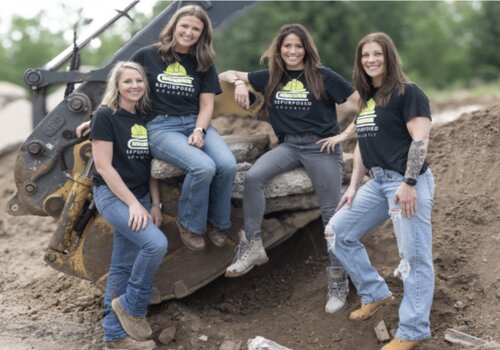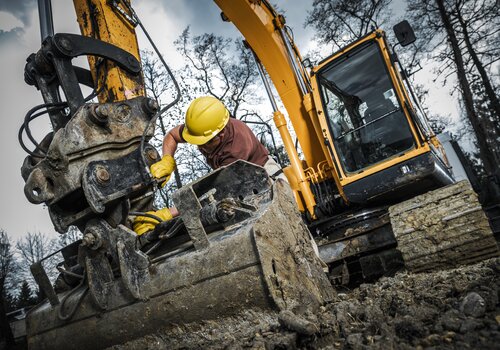Every 11 minutes someone in the U.S. dies by suicide. Too many of those who do, work in the construction industry. In 2016, the Centers for Disease Control (CDC) studied the correlation between suicide and occupation for the first time and found that workers in construction and extraction had the highest suicide rates of any occupation. The rate among construction is more than three times the national average, at 49.4 suicide deaths per 100,000 workers. That works out to an estimate 5,242 construction industry suicides annually, which is more than five times the number of construction industry work fatalities. Consider also that for every person that dies by suicide there are another 25 suicide attempts.
The topic first came to the attention of a task force within the Construction Financial Management Association (CFMA) in 2016. The group has since grown to become the Construction Industry Alliance for Suicide Prevention (CIASP), garnering support from contractors, unions, associations, and mental health organizations across the country.
According to CIASP board member, Michelle Walker, it’s likely that suicides in construction aren’t just a recent phenomenon. “The risk factors for construction workers aren’t new,” said Walker, who also serves as VP of finance and administration at SSC Underground in Phoenix. The demographics of the industry (96.6% men and more than 660,000 veterans) play a role. Men are twice as likely to take their own lives as women. Male veterans are 1.5 times more likely to die by suicide than Americans who never served in the military. “A stoic, independent, tough-guy mentality, may keep workers from seeking help,” says Walker. “Others may not offer help because they don’t feel comfortable intervening.” Other risk factors include chronic pain that can result from physically demanding jobs, along with alcohol and substance abuse. Shift work that can result in sleep disruption as well as time away from home, may also contribute. Stress from seasonal layoffs and COVID-19 may also play a role.
Implement a Suicide Prevention Program in Your Workplace
CIASP is working to gain awareness for a topic that has long been stigmatized in society. “We want construction leadership to get informed on the issue and make it known that their workplace is a safe place to ask for help, or to ask for help for others,” says Walker.
Here are some resources to help you implement a suicide prevention program in the workplace:
First, review the Needs Analysis and integration checklist. The checklist takes you through a series of questions to help evaluate your company’s suicide prevention preparedness.
Next, reference the Integrating Suicide Prevention in Your Company guide to get started. It provides recommendations for implementing a program, based on what level your company is at with suicide prevention preparedness. Resources include education materials, awareness posters, Toolbox Talks discussion guide, and links to support programs. These resources will help send a strong message about your company’s commitment to mental health wellness and suicide prevention, provide your team with knowledge to recognize warning signs, cultivate internal champions, create support networks and clear up misconceptions.
CIASP has also partnered with Lendlease, an international property and infrastructure group and member of the CIASP board, to provide access to LivingWorks Start, an online suicide prevention training program. The 60-minute session provides key tools for participants to recognize when someone is thinking about suicide and how to connect them to the help and support they may need. It can be accessed from any computer or mobile device and is free for industry stakeholders. “It’s a quick, powerful program that teaches people what to look out for and how to connect someone to help,” says Randy Thompson, Vice President, Business Development for LivingWorks.
The good news is that programs designed to educate the workforce are effective at preventing suicide. According to Thompson, prior to training, 35 percent of participants report feeling confident in their ability to support someone at risk of suicide. After the training, 85 percent feel confident. A recent study of a LivingWorks program designed for a military base showed an 80 percent reduction in the suicide rate after one year. A 2016 study published in Lancet Psychiatry shows a $1 investment in mental health brings a $4 return on investment through improvements in the ability to work and productivity.
 Build a Network of Safety
Build a Network of Safety
“Our concept is based around building a network of safety,” said Thompson. “If you are trained in suicide prevention, if family members are trained and the workplace has people trained, suicide is more likely to be prevented.”
Other LivingWorks programs such as SafeTalk, provide additional face-to-face training. SafeTalk is a four-hour face-to-face workshop. The ASIST workshop, is a two-day program that includes instruction on skilled intervention and developing a safety plan.
Some of the largest organizations in the industry are supporting CIASP's efforts, including the Associated Builders and Contractors, the National Association of Home Builders and The Associated General Contractors of America.
“At SSC we’ve made suicide part of the conversation,” explained Walker. “We talk it about it every crew and company meeting so that people get more comfortable with the topic.”
STAND Up for Suicide Prevention in the Construction Industry
CIASP encourages everyone to take the pledge to STAND up for Suicide Prevention:
- Safe: Create a culture in which team members feel safe to ask for help or speak up if they are concerned about their fellow co-workers.
- Training: Make suicide prevention training available to all team members so that they can recognize the warning signs and be equipped to help those at risk.
- Awareness: Raise awareness by sharing the message of suicide prevention through such organizational activities as trainings, safety meetings, toolbox talks, team meetings, newsletters, and social media posts.
- Normalizing: Normalize the topic of suicide prevention as a health and safety priority by talking about suicide, suicide prevention, and mental health.
- Decreasing: Help decrease the risk of suicide in construction by ensuring that all team members have access to an awareness of CIASP's EAP/MAP, behavioral health benefits, screening tools, community crisis support, the Suicide Prevention Lifeline, and Crisis Text Line.
While most people don’t kill themselves at work, it doesn’t mean the industry isn’t suffering a huge related financial cost as a result. According to Thompson, it’s estimated that companies suffer more than $1 million per worker lost to suicide. A third of workers compensation claims in men and nearly two-thirds in women had an existing mental health condition.
Suicides in working age adults across all industries are up 40 percent over the past two decades. But armed with new awareness and training tools, the construction industry has a tremendous opportunity to build a network that can save the lives of thousands of friends, family and co-workers.
Subscribe to the CONEXPO-CON/AGG 365 weekly newsletter to receive more construction industry stories like this.
Read Next
Addressing Mental Health in Construction
How to Reduce Stress in Construction
Ep. 128: Managing the Stress of Construction with Ryan Priestly
VIDEO: Construction Workers Share their Struggles with Mental Health to Combat Suicide












